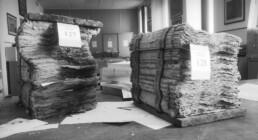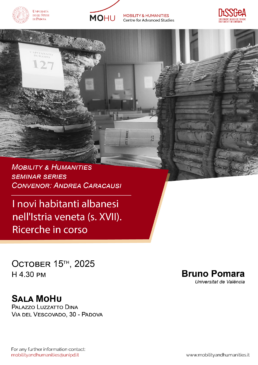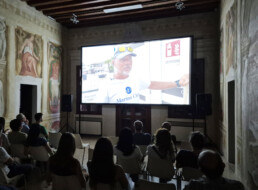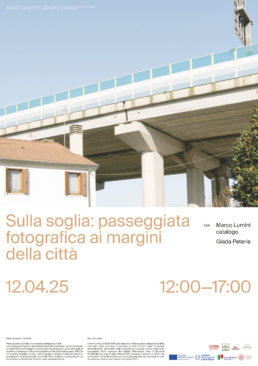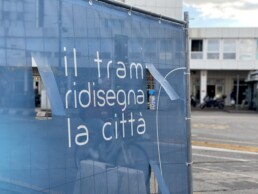12 Sept 2025 |“Camera con Paesaggio” public screening of Landscape Videomaking
12 Sept 2025 |“Camera con Paesaggio” public screening of Landscape Videomaking
On September 12th, the screening of 3 selected documentaries for “Camera con Paesaggio” was held, a section of the Euganea Film Festival dedicated to the Landscape Videomaking laboratory, supported by our MobiLab, active at the Landscape Studies Degree Course.
Thanks to the work of professors Mauro Varotto, Marco Toffanin and Michele Trentini, the event highlighted the work of 3 short films:
Creating and recreating the homeland (8′) by Wang Yimei, Skibeach (13′) by Marco Toffanin and Michele Trentini, Via Melograno (7′) by Francesco Casari.
Euganea Film Festival has become a very consolidated stakeholder for the Landscape Studies Degree Course.
We see great potential in this collaboration because it involves our MoHu in its 3 missions: teaching, research and third mission.
From the teaching perspective, thanks to the Camera con Paesaggio section, the festival allows us to enhance the visibility of our students’ work from the degree course in Landscape Sciences. Students participate in the Landscape Videomaking Laboratory, also thanks to the equipment and software developed by our Laboratories. The best products have the opportunity to be presented at the festival.
But Euganea Film Festival also obviously stimulates our third mission, because it allows us to go beyond academic walls and get in touch with the territory, particularly addressing environmental sustainability issues, which is crucial both for the message that the Festival wants to convey to citizens and for the disciplines we study and teach at DiSSGeA.
This partnership with the Festival means a lot to us not only in terms of teaching and third mission, but also in the field of research. With this collaboration we nurture interest in film, in audiovisuals, as a method for scientific research in human and social sciences, a method that allows us to use alternative languages to interrogate the landscape, mobility, the environment, to explore its complexity and transformations, to find “new ways of looking”, which are always also “new ways of saying” materiality and the meaning of geographical space.
We are very grateful to all the personnel involved, to the laboratory professors, to our laboratory technicians, and above all to the students who put themselves out there every year.
Infrastructure Humanities | Korean-led project (2025-2031)
Infrastructure Humanities | Korean-led project (2025-2031)
This project is carried out by Korean co-PIs from the Academy of Mobility Humanities at Konkuk University, with In-Seop Shin as leading PI, in collaboration with international co-PIs: Peter Adey (CGH), Peter Merriman (CeTraM), Lynne Pearce (CeMoRe), Paul Rabé (IIAS), and Tania Rossetto (MoHu). The project was awarded to Konkuk University in response to a call from the National Research Foundation of Korea.
Infrastructure Humanities is an agenda that enhances and broadens the scope of mobility humanities research, developed over the past seven years by the Academy of Mobility Humanities (AMH) at Konkuk University (Seoul). It initiates thinking about infrastructures as (im)material actants that shape and condition mobilities. Specifically, Infrastructure Humanities recognizes infrastructure as the essential determinant of human existence and a vital object of study for understanding humanity.
The infrastructural turn in humanities challenges us to reconsider infrastructure not as an external means or methods to human existence, but rather as an actant that constitutes human lives internally. It thus encourages us to understand individuals, societies, and, as their territory, the Earth itself, as ‘entities-being-with infrastructure.’ Contrary to the fetishization of infrastructure that often leads to the apocalyptic projections of the future, Infrastructure Humanities—by thinking of humans with and through infrastructure—investigates emergent practical ethics aimed at reconfiguring the relationship between humans and (im)material infrastructures in more sustainable forms.
Moreover, Infrastructure Humanities seeks to establish an international research model for infrastructure studies, building a global collaborative research platform from the humanities perspective. This research program facilitates cooperation and mutual exchanges at the grassroots level, both locally and globally. Such collaboration is necessary for addressing the infrastructure-induced polycrisis: tackling crises related to infrastructures across scales —individual, social, and planetary —requires a shared understanding of the problems among citizens, corporations, academia, governments, and international organizations. To this end, Infrastructure Humanities seeks to develop a global ecosystem for infrastructure humanities research.

Textu(r)al Urban Mobilities: Cities | Objects | Narrations
Textu(r)al Urban Mobilities: Cities | Objects | Narrations
“Mobilities” DiSSGeA Department Development Project (PSD 2025-2027)
Using a very common metaphor, we could say that the city is a text put in motion by diverse human and non-human agents. Urban mobilities are conveyed through discourses, texts, and narratives of various kinds. The city can therefore be seen as a rich interweaving of textual forms, which compose an extremely articulated fabric that contributes to shaping mobilities in the past, present, and future. Adopting a textual approach to the urban means also considering cities as communication devices and environments, semantic containers, sets of signs that produce meaning, have symbolic and performative powers. In this immaterial layer there is always an implied agency of materials, objects, and things that compose and animate urban life and interact with textualisation processes.
In recent years, literary urban studies, in addition to investigating literary works dedicated to cities, have worked to expand their field of action by interpreting the complex of contemporary urban phenomena through the broader filter of narrative and text. Moreover, according to a geosemiotic and a design-oriented approach, the city is not only mediated by texts of various kinds but is itself a text as a material support in which a considerable amount of signs is inscribed. Drawing inspiration from these and other developments in research within the well established field of ‘cities and/as texts’, the project focuses on urban mobilities as an area particularly interested in the interweaving of narratives and objects, texts and non-human entities, meanings and things.
This allows for the adoption of multiple theoretical perspectives, including object-oriented philosophies, enactivist approaches to narratives, mobilities design, new materialisms, future studies, infrastructure studies, literary urban research, urban history and urban geography. The dialogue implemented between scholars from different backgrounds and the organized activities will also allow for a methodological exchange, which will include mobile and creative methodologies, close reading, discourse analysis, embodied ethnography, archival research on urban environments, among others.
Main activities:
- Participation in the T2M (International Association for the History of Transport, Traffic and Mobility) Conference held in Eindhoven (NL) 4-7 November 2025 with a MoHu panel titled “Reading, enacting, and prospecting alternative mobilities: cities, texts and materialities”.
- Organization of a scientific event at our MoHu centre in Padua to be held in early 2026 (February) with some invitations of scholars who are connected with the MoHu through existing formal partnerships. The event will not only host such main partners but will also involve early career Dissgea scholars (PhD and postdoc) as well as Dissgea students, by hosting a Poster Session open to final dissertation projects and other works by MA students of Dissgea working on conference-related themes.
External Participants & Partnerships:
Simone Fari, University of Granada, MoHu past visiting
Ole B. Jensen, Aalborg University, MoHu honorary member and past visiting
CRPM (Centre de recherches pluridisciplinaires et multilingues) ESPACE, DÉPLACEMENT, MOBILITÉ GROUP based at UNIVERSITÉ PARIS NANTERRE. Referents: Lucia Quaquarelli and Adrien Frenay
MOBILITIES IN LITERATURE AND CULTURE RESEARCH CENTRE based at the UNIVERSITY OF SURREY. Referent: Gabriele Lazzari
FRINGE URBAN NARRATIVES research network, based at the UNIVERSITAT AUTÒNOMA DE BARCELONA. Referent: Patricia Garcia
Principal investigator:
Tania Rossetto
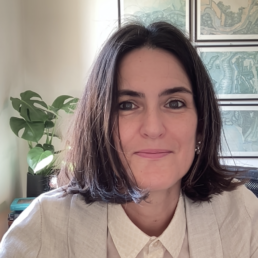
Members:
Enrico Valseriati
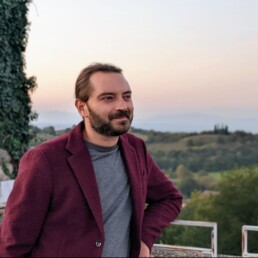
Giada Peterle

Margherita Cisani
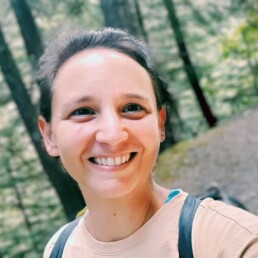
Laura Lo Presti
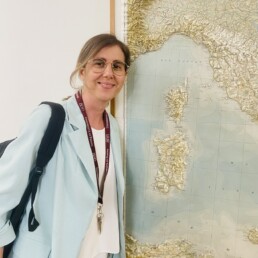
Giuseppe Tomasella
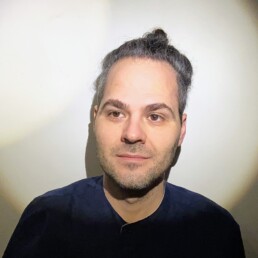
Francesco Zuccolo


